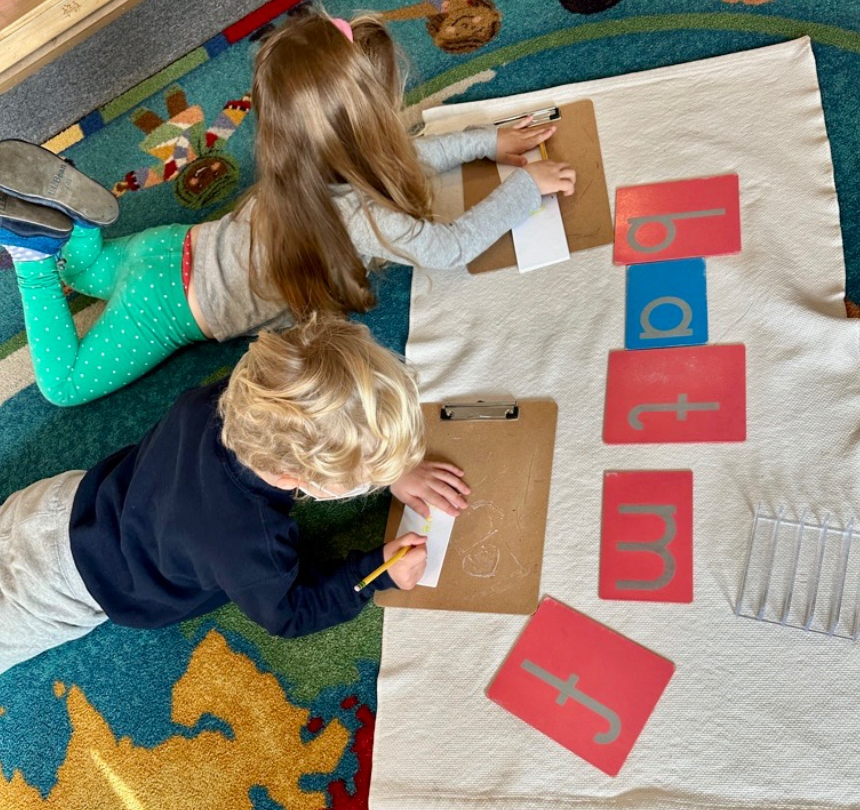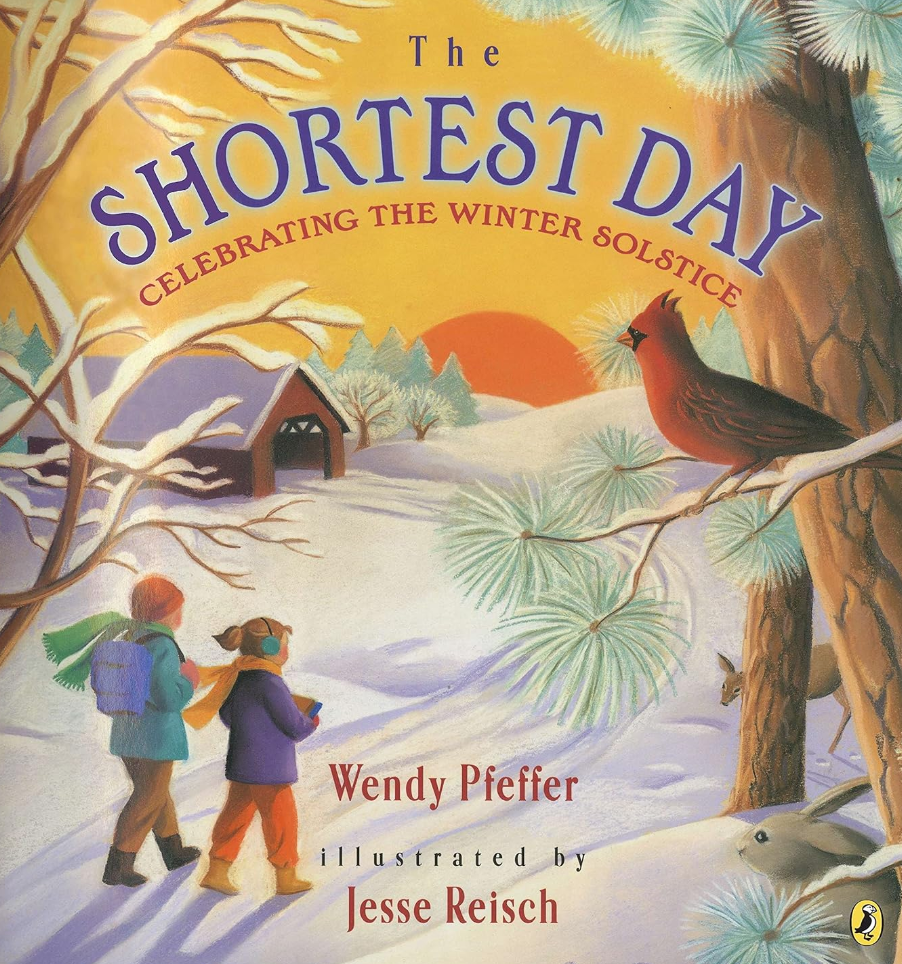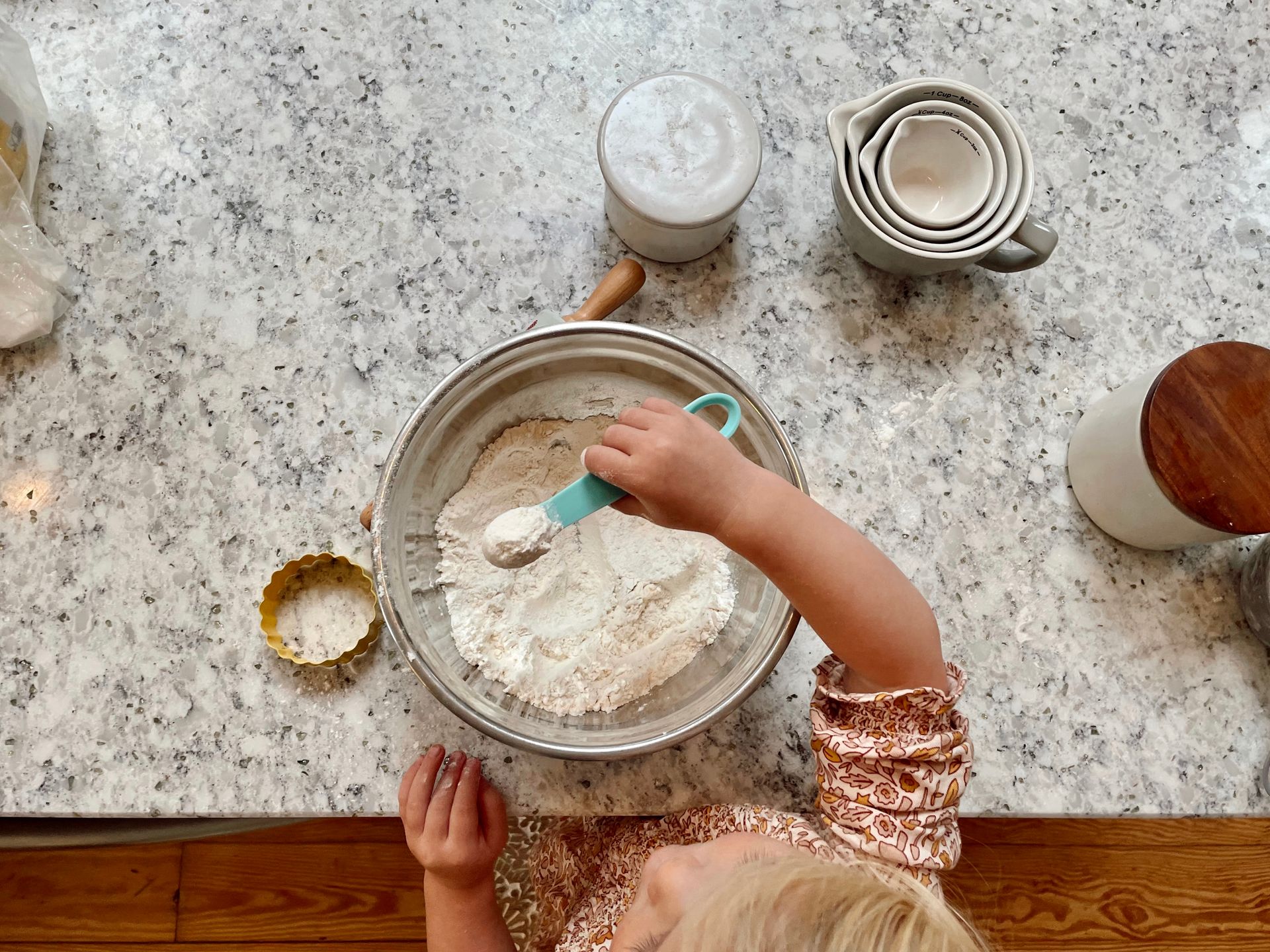Blog

Handwriting or penmanship; no matter what you call it, it was likely an important part of your early education. Pressured by time and content constraints, many schools have abandoned explicit handwriting instruction. This is resulting in a generation of children who do not know how to write in cursive, and who sometimes even struggle to form legible printed letters. A number of scientific studies point to the importance of handwriting, including this one which concluded that handwriting (as opposed to typing or tracing) guides preliterate children toward developing reading skills. Interested in learning more about the scientific evidence that supports the importance of teaching handwriting as a skill? Check out this article that highlights five of the important reasons we should not allow direct instruction in this area to go by the wayside. Not only does learning handwriting early help children develop skills needed for reading, evidence suggests it makes children better writers, spellers, and leads them towards future success in academics. Higher brain density and gray matter volume have been connected to high-quality handwriting, suggesting that frequent practice may aid in neural processing. Studies also conclude that it is critical for teachers to model the correct way to form letters, but also to utilize direct instruction. In Montessori schools, handwriting is a critical component of children’s learning. As with so many other skills, our curriculum takes a spiraling approach, indirectly preparing children prior to direct instruction. Very young children develop the muscles necessary for a pincer grasp while they manipulate materials such as the knobbed cylinders, a Montessori favorite! There are two other important materials in the primary classroom that facilitate handwriting readiness: the metal insets and the sandpaper letters. The metal insets are wooden trays that hold a series of stencil-like shapes. Removable shapes are blue with a pink background. Some shapes have straight-lined sides while others are curved. Children trace the shapes with a pencil, giving their hands a chance to practice creating a variety of lines. Increasingly challenging activities encourage children to create different patterns with colored pencils while staying inside the original traced lines. At first glance, this may appear to be a fun art activity (which it certainly is!) but its main intention is to prepare children for their upcoming work in handwriting. Montessori sandpaper letters take the work a step further. Twenty-six wooden tiles are adorned with gritty, sand-textured letters of the alphabet. Children are given lessons on how to trace these letters with their fingers and say the sound. (As a side note, Montessori children are taught the sound of each letter in conjunction with its name, which makes much more sense for reading preparation.) Perhaps you have observed this in a Montessori classroom; if you have not, we highly suggest coming in to watch the magic of this work in person. Interestingly, children who attend Montessori schools are typically able to write even before they have begun to read. Once they do begin reading, these previously developed skills allow them to seamlessly work on the various components of literacy development simultaneously. Once children enter the elementary years in a Montessori school, they are required to write throughout the day. Typically, children work throughout the three-hour work period in the morning on a largely independent basis, unless they are receiving a direct, small-group lesson from the guide. During this independent work they record parts of what they do in notebooks. For example, if a child uses a card material to learn about the internal body functions of a fish (how they perform the tasks of respiration, circulation, movement, and so on), they will record at least part of this work in their notebook. For example: “Circulation. Fish have two chambers in their hearts.” This writing continues throughout the day and is directly connected to other content children are learning. Some classrooms include direct handwriting practice even in the elementary years. This is typically something for children to copy in their notebooks, such as a poem or a paragraph about something they recently had a lesson on. One final and very important reason to teach handwriting: when children learn how to form beautiful letters early on, they are better able to focus on a myriad of other things. For example, when writing a story, they can actually think about their story ideas instead of belaboring over how to write a ‘q’. Interested in learning more? As mentioned earlier, we encourage you to come visit the school and observe in one of our classrooms. Doing so is common practice in Montessori schools, is unobtrusive to the children, and can provide excellent insight for those who are looking to learn more about this unique educational approach.

The Shortest Day by Wendy Pfeffer, illustrated by Jesse Reisch https://www.amazon.com/Shortest-Day-Celebrating-Winter-Solstice/dp/0147512840/ref=sr_1_1?ie=UTF8&qid=1540394880&sr=8-1&keywords=shortest+day December 21 marks the Winter Solstice: the shortest day of the year in the northern hemisphere. The Shortest Day is a story that will appeal to a wide range of ages. Young children will relate to the children in the story who long to play outside after dinner as they did in the summer months. Older children will love learning about the scientific and historical aspects of this special day. Everyone will appreciate discovering how the solstice is celebrated in different cultures! My First Kwanzaa by Karen Katz https://www.amazon.com/My-First-Kwanzaa-Holiday/dp/1250050464/ref=cm_cr_arp_d_product_top?ie=UTF8 Written for young children, this book helps explain the traditions and the seven principles of Kwanzaa: unity, self-determination, collective work and responsibility, cooperative economics, purpose, creativity, and faith. A great choice for preschool or younger elementary-aged children! Holidays Around the World: Celebrate Kwanzaa by Carolyn B. Otto https://www.amazon.com/Holidays-Around-World-Celebrate-Kwanzaa/dp/1426328494/ref=sr_1_1?s=books&ie=UTF8&qid=1540396402&sr=1-1&keywords=celebrate+kwanzaa This National Geographic book contains lots of photos and helpful information. Readers will learn about the important symbols and traditions of Kwanzaa along with the seven principles of the holiday. A special section for parents gives additional information. Readers at the elementary level would best appreciate this book. The Night of Las Posadas by Tommy dePaola https://www.amazon.com/Night-Posadas-Picture-Puffin-Books/dp/0698119010/ref=sr_1_1?ie=UTF8&qid=1540396752&sr=8-1&keywords=the+night+of+las+posadas Tommy dePaola’s books have won children’s hearts for decades, and The Night of Las Posadas is no exception. Based on a tradition celebrated in Latin America and among some Latinx communities in the United States, readers unfamiliar with las posadas will learn about this reenactment. The story is filled with magic and wonder, as two strangers fill in for villagers who have come down with the flu. Dream Snow by Eric Carle https://www.amazon.com/Dream-Snow-Eric-Carle/dp/0399235795/ref=tmm_hrd_swatch_0?_encoding=UTF8&qid=1540398291&sr=8-1 An old farmer who looks an awful lot like Santa Claus has a barn full of animals that he loves. One early winter afternoon he falls asleep in his chair and dreams about snow covering them (this part of the book has fun flaps to lift!). When the farmer awakes, he rushes outside to find that it has snowed, and he is just in time to decorate a tree and lay out gifts for the animals. The Little Drummer Boy by Ezra Jack Keats https://www.amazon.com/Little-Drummer-Ezra-Jack-Keats/dp/0140567437/ref=sr_1_1?ie=UTF8&qid=1540398364&sr=8-1&keywords=the+little+drummer+boy+ezra+jack+keats The classic Christmas song is accompanied by beautiful illustrations. The story of the little drummer boy is a nice break from consumerism to remind us all what true gift giving is really all about. The Trees of the Dancing Goats by Patricia Polacco https://www.amazon.com/Trees-Dancing-Goats-Aladdin-Picture/dp/0689838573/ref=sr_1_1?ie=UTF8&qid=1540398560&sr=8-1&keywords=trees+of+the+dancing+goats Trisha and her family are Jewish, and she loves everything about how they celebrate Hanukkah. When she stops by her neighbor’s house expecting them to be preparing for Christmas she makes a surprising discovery. The neighbors are all sick in bed with scarlet fever. Trisha and her family get to work delivering Christmas to them. Holidays Around the World: Celebrate Hanukkah: With Lights, Latkes, and Dreidels by Deborah Heiligman https://www.amazon.com/Holidays-Around-World-Celebrate-Hanukkah/dp/1426324766/ref=sr_1_1?ie=UTF8&qid=1540398683&sr=8-1&keywords=celebrate+hanukkah This is another great selection from the National Geographic Holidays Around the World collection. Filled with photographs and fascinating factual information, older children will appreciate learning about the Jewish traditions of Hanukkah. Shanté Keys and the New Year’s Peas by Gail Piernes-Davenport https://www.amazon.com/Shant%C3%A9-Keys-New-Years-Peas-ebook/dp/B00JRMXXT2/ref=sr_1_fkmr3_1?s=books&ie=UTF8&qid=1540399212&sr=8-1-fkmr3&keywords=santa+keys+and+the+new+years+peas Shante is excited to prepare for New Year’s Eve but realizes that her family has forgotten to buy the black-eyed peas they all love. She heads to the neighbor’s hosue to borrow some and soon finds herself learning about the many New Year’s traditions in her neighborhood. Bringing in the New Year by Grace Lin https://www.amazon.com/Bringing-New-Year-Read-Child/dp/0375866051/ref=tmm_pap_swatch_0?_encoding=UTF8&qid=1540397736&sr=8-1 A beautiful book geared toward 3-6 year olds, Lin tells the story of a family preparing for the Chinese lunar new year. Readers will learn about rituals like cleaning the house and hanging special poems, food that is eaten, and other ways people celebrate, including a fun dragon parade page!

The holidays are around the corner and children love to help out in the kitchen. Though they may be prone to extra messes, letting them help has many benefits: Promote healthy eating habits - Children are likely to eat more fruits and vegetables if they help to make their food at home. Preparing ingredients together is a great time to talk about why our bodies need certain vitamins and how we can get those from the food we eat. Increase their likelihood of trying new foods - When children make a meal themselves, the pride they feel in their accomplishment and the interaction they have with the food often takes away apprehensions they might have had about trying it otherwise. Teach children where their food comes from - Whether you grow your own food, visit your local farmer’s market, or head to the grocery store, the kitchen is the perfect place to talk to children about where their food comes from. Give them practical life skills - Someday your child will have to prepare their food. Why not start learning now? Doing so lays the foundation for confidence in the kitchen, and independence as an adult. Cooking teaches reading and math - While the youngest children might enjoy counting while adding ingredients, older children can read recipes and work with fractions and time. Children gain a sense of contribution - When a child helps cook a meal, they have done something important to help their family community. This is just another way to promote confidence and independence. Things to Keep in Mind Emphasize safety. Talk to your children about what is off-limits - whether you’d like them to stay away from hot stoves or sharp knives - make sure they know what you expect and remind them often. Make it fun! Make meals that are full of color. Make silly faces on your pizzas. Dance around the kitchen. Cooking should be a fun experiences for everyone in the family. Give your kids tools that will work for them. Make sure they are comfortable in for little hands to hold, but make sure they get to use the real thing. Click here [ https://www.forsmallhands.com/kitchen ] for one good resource to find such tools. Recipes to Get You Started! French Bread Pizzas Link http://thepioneerwoman.com/cooking/french-bread-pizzas/ Picture https://www.flickr.com/photos/pioneerwoman/9405475934/ Ree Drummond over at the Pioneer Woman is always full of great ideas. You may want to do some of the chopping and ingredient cooking ahead of time unless you have older children. Even the littlest ones would enjoy assembling their own pizzas with whatever toppings they like. Nutella and Raspberry Sandwiches Link https://www.realsimple.com/food-recipes/browse-all-recipes/nutella-raspberry-sandwich-recipe Picture http://cdn-image.myrecipes.com/sites/default/files/image/recipes/rs/2009/nutella-raspberry-sandwiches-rs-x.jpg It doesn’t get much simpler (or more delicious!) than this. Children as young as three often practice spreading butters in their Montessori classrooms, so they may surprise you with their skills! Pinto Bean and Cheese Tacos Link https://www.realsimple.com/food-recipes/browse-all-recipes/pinto-bean-and-cheese-taco-recipe Picture https://cdn-image.realsimple.com/sites/default/files/styles/rs_horizontal_image_4/public/pinto-bean-taco.jpg?itok=uhq6uHOq Not only is this recipe easy to make, but it’s a great quick dinner option for busy weeknights. Feel free to substitute the beans for whatever your favorite protein is, and add in fun extras like guacamole! Earth Cookies Link http://www.delish.com/cooking/recipe-ideas/recipes/a52657/earth-day-cookies-recipe/ Picture http://del.h-cdn.co/assets/17/16/1600x800/landscape-1492653550-delish-earth-day-cookies-001.jpg While these may not be the healthiest recipe on our list, they were far too cute to leave out. Cookie Cutter Fruit Salad Link https://witandwhistle.com/2011/07/05/cookie-cutter-fruit-salad/ Picture https://s3.amazonaws.com/spoonuniversi-wpengine/spoonuniversi/wp-content/uploads/2015/06/watermelon-patriotic-star-salad-670x670.jpg Consider this recipe an inspiration. You could use so many different fruits and veggies in an unlimited number of shapes. The final product could be a fruit salad, or you could make kababs, put them on pancakes, the possibilities are endless… Salad in a Jar Link https://www.hellowonderful.co/post/COOKING-WITH-KIDS--SALAD-IN-A-JAR Picture https://i.pinimg.com/originals/e2/31/f7/e231f7afd22cb22dec9cf73681481f7c.jpg Looking for ways to teach your kids to make their own lunches AND eat more vegetables? Look no further… Waldorf Chicken Boats Link http://www.foodnetwork.com/recipes/food-network-kitchen/kids-can-make-waldorf-chicken-boats-3363922 Picture http://food.fnr.sndimg.com/content/dam/images/food/fullset/2015/11/20/5/FNK_Kids-Can-Make-Waldorf-Chicken-Boats_s4x3.jpg.rend.hgtvcom.616.462.suffix/1448278926390.jpeg For those of you looking for something a little fancy (and fun!), check out these Waldorf Chicken Boats. If you cook the chicken ahead of time and stand by to assist in measuring, children can make this recipe almost entirely on their own. Happy cooking!
